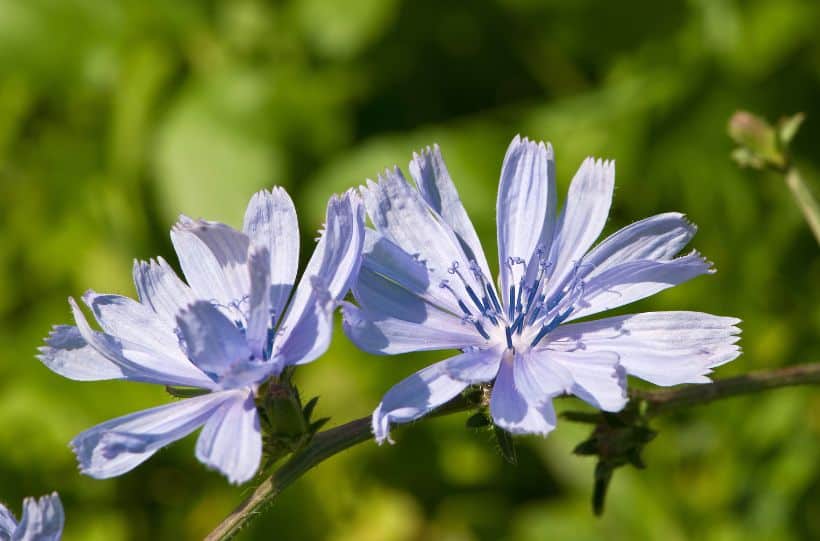How to Grow Chicory
Chicory (Cichorium intybus) is native to Europe where it was grown as a coffee substitute. The leaves are bitter and the taste may not be exciting to everyone but the weed has several medical and culinary benefits.
It is an easy plant to care for, once it becomes established. They have large leaves that grow fast and spread wide. You too can grow chicory in your backyard.

Other names: Horseweed, wild endive, blue sailors, blue daisy, blue dandelion, ragged sailors, wild bachelor’s buttons, blue weed, succory, hendibeh, coffee weed, and bunk.
Best Time for Growing Chicory
Chicory is a cold weather crop so consider growing the plants in late fall or early winter. Time the planting period for when the frost has passed. It is a perennial crop.
Soil Preparation
Chicory loves the full sun. They can grow in almost all kinds of soils, as long as there is good drainage. Prepare the garden by tilling the soil and removing other weeds and debris. Level the garden. Add organic manure and mix well with the topsoil.
Planting
Chicory can be planted from seeds or seedlings. Purchase seeds from your local nursery and start them indoors for about 5-6 weeks before transplanting them into the garden outdoors.
The seeds should be planted about 6 inches apart. You can thin the plants later if needed. Seedlings should be planted about 12 inches apart. Remember that the plants grow wide. Water the plants immediately after planting the seedlings.
Caring for Chicory
If you added organic manure to the soil while preparing the garden, you do not need to add any artificial fertilizers. You can add mulching once the seedlings have developed because mulching helps to retain moisture and stifle weeds.
Watering should be consistent. Keep the garden moist but not waterlogged. Keep weeds away from your chicory plants because weeds will start competing for nutrients with the plants and also spread pests and diseases.
Pests and Diseases
Slugs are the most common pests that attack chicory. Try to control the spread of slugs in your garden using natural means. When you find rotting leaves on your chicory plants, you should regulate the watering. It means that your garden is too damp.
Harvesting
Chicory is grown for its leaves and roots. The leaves should be well colored and full before harvesting. Snip the shoots and leaves and use them either raw in salads or add them to your favorite dishes.

Harvest the roots in the first year after the plants have flowered. You can grind these roots and mix them in drinks as a coffee substitute. Some people also eat the soft parts of the stem and roots.
Forcing Chicory
Start forcing chicory indoors in preparation for the next planting season. Dig up the roots in winter and store them in a dry place. When you are ready to force them, place them in dark containers in a dark room. No light should get to these bulbs.
The process of forcing chicory takes roughly one month. Once the bulbs start sprouting, take them outdoors and plant them in the garden.
And if you’re interested in growing other medicinal herbs, check out these next:

